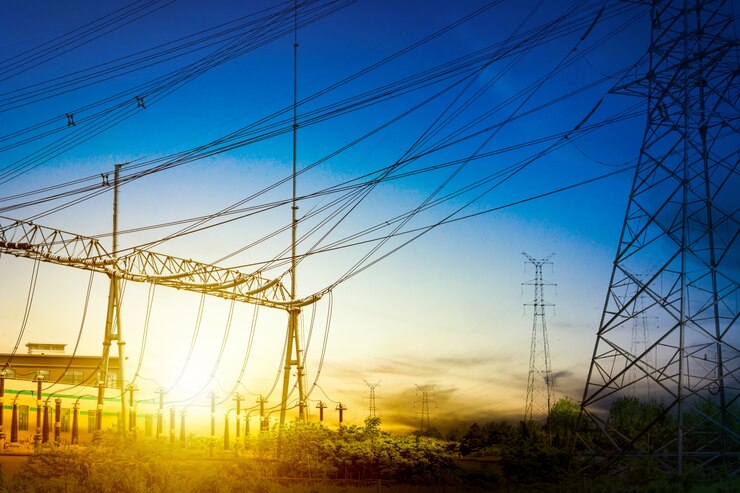Power System Reliability Engineering: Stable Energy Supply
2025-02-12
It cannot be overstated how valuable the reliability of power systems is in today’s world, as electricity has become the common enabler to the majority of activities. Reliability engineering of power systems is a significant process to enhance the performance of electric networks and to avoid disruptions and several other unwanted incidents that may affect consumers in terms of power outages. In this article, power system reliability engineering will be discussed in its importance, methods, issues, and future developments.
What is Power System Reliability Engineering?
Power system reliability engineering can be defined as the processes involved in the design, contracting, operating, and maintaining of the power system to ensure that the power supply it provides is reliable. The objective is to mitigate contingencies like power blackouts and equipment failures and guarantee that electricity generation, transmission, and distribution are reliable.
Knowledge of some of the vital aspects of power system reliability may be useful to carry out the work envisaged:
Reliability of Power Systems: This is the extent of a power system within a certain power system in delivering electricity with an interruption-free certainty.
Reliability: Refers to the dependability of the system in terms of the rate at which it cuts across its intended function as planned.
Risk Management Control: This can be defined as the identification of risks that may face the system including natural occurrences such as floods or other physical disasters, compromise of equipment, or even cyber-security threats.
Grid Robustness: This is the capacity of a grid to withstand disturbances and ensure that service interruptions are minimal during occurrences of disturbances related to the grid.
Importance of Power System Reliability
The consequences are catastrophic to power systems since any failure or disruption can impact various aspects of society. Therefore not only houses but also businesses, industries, hospitals, and other facilities important for livelihood experience power outages. Weather fluctuations and other crudities have further intensified in recent years, including hurricane events and wildfires, making it ultra-critical to have a more reliable power system that can be restored from such events.
However, due to the recent developments in renewable energy systems such as solar and wind power systems, it is not easy to control the voltage and frequency of a power grid. These can be inconsistent hence the complexities needed to balance the supply and demand in the grid system.
Power System Reliability Assessment and Evaluation
It is important that a power system should be assessed for its reliability and a way of achieving this is through reliability assessment. This is done to identify with high probability chances of system failure and likely risks.
Common Reliability Indices:
Loss of Load Probability (LOLP): The likelihood of not being consistently able to provide electricity to the demand due to generator or transmission collapse.
It reflects the anticipated shortfall of energy that will not be generated and transmitted because of the system deficiencies.
SAIDI: System Average Interruption Duration Index; this refers to the average of the outage duration felt by the customer.
System Average Interruption Frequency Index (SAIFI): The average number of interruptions per customer during a specified period.
These indices are quite useful for understanding the efficiency and reliability of the power distribution network so the engineers to make improvements.
Reliability Modeling Tools:
FTA: An analytical technique that is used in systems engineering that stems from the top down so that engineers may isolate components.
Markov Models: The present model employs probable transition for analyzing reliability at different states of the systems.
Monte Carlo Simulation: It is a simulation that helps one to test the reliability of a system for the expected time in more than one condition by carrying out random sampling.
Through such models, engineers can run tests on the system and look at how some of the most significant determinants of reliability including age, fault, and weather might affect the power system.

Emerging Trends in Power System Reliability Engineering
The above shows the current generation and its improvement of tools and techniques that are used to enhance the reliability of power systems. Here are some trends that are realized in the field:
Smart Grids and Automation: People can monitor and control power systems in an automated way due to the introduction of smart grid technologies. Sensors, potential metering as well as communication systems help in the early detection of faults and fast remedial action, thus enhancing system reliability.
Integration of Renewable Energy: Given that renewable energy is taking different forms in the supply system, the reliability of the power system should be modified for its regular update. Renewable energy sources as well as backup conventional sources have to be accommodated; demand side management, energy storage systems as well as intelligent systems are vital tools towards this end.
A good indication of the prospects of grid resilience regarding climate change – Several weather events like hurricanes, floods, and wildfires are increasing in frequency. Such calamities are now targeted to have some form of engineering undertaken to put into place the necessary backup measures and self-healing architectural formations to withstand such unfortunate circumstances.
Best Practices for Power System Reliability Engineering
To ensure efficiency in handling these challenges, power system engineers employ appropriate measures in handling the system to achieve maximum performance and minimum chain disturbances. Some of these practices include:
Finally, there is the aspect of regular monitoring and maintenance; constant check-up of the systems and the devices to be able to have a clue of the kind of failure that is likely to occur and then be in a position to prevent it.
Contingent Planning: Having appliances such as other transformers or backup transmission lines means that in the event of the primary system failing, there is an alternative method of providing power.
Particularly noteworthy are aspects like training, and workforce development, engineers need to be updated with the advanced technologies in power systems with improved reliability techniques. When relying on experiences and training that have been done in the past, it is crucial to have sessions that should be taken in the future.
Conclusion
Power system reliability engineering is an essential field that ensures the safe, efficient, and uninterrupted delivery of electricity. As our dependence on electricity continues to grow, and the energy landscape becomes more complex with the rise of renewable sources and smart grid technologies, power system reliability will only become more critical. Engineers are continually innovating, using advanced tools, models, and strategies to maintain the stability of our electrical grids and ensure that they remain resilient in the face of growing challenges. For additional insights, visit XY Tower and explore how we can contribute to enhancing power system reliability in the modern world.

Hey, I’m Chunjian Shu
"X.Y. Tower: Reliable, innovative solutions for high-quality towers and electrical equipment with professional service.
